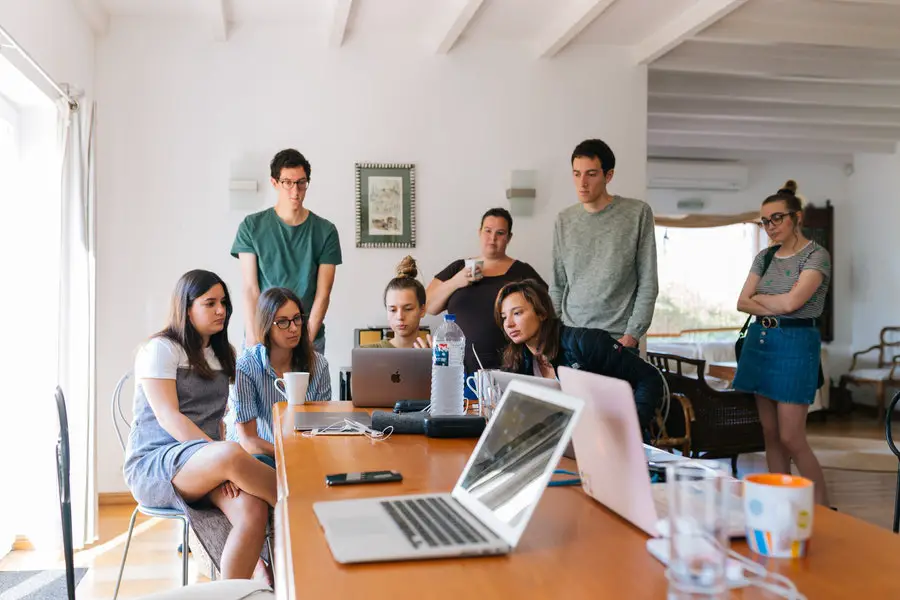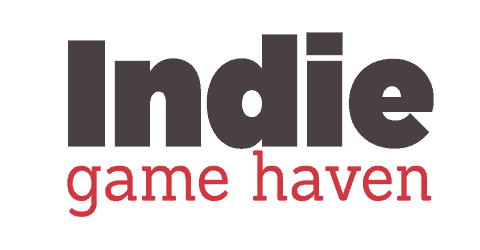Each time I participate in a game jam, the biggest obstacle is often not being able to complete my ideas, but instead, it’s coming up with an idea in the first place. I think we all want to come up with something unique, interesting, and fun. The problem for me is that I have often have an early idea, but I know that my first idea is not going to be my best. I keep digging, and sometimes it feels like I am spending too much time in this area. I want to talk about a method I have developed for this to become more successful in game jams.
Process of Coming Up With and Selecting Ideas for Game Jams

Step 1: Come Up With An Area of Interest Before the Game Jam Starts
This worked out great for me this last game jam that I participated in. I knew that I wanted to look more into Unity’s NavMesh or character building.
I had modeled a ton of environments in the past. I knew how to do this. Instead, I wanted to build an entire character. This meant that I needed to 3D model it, rig it, place it in Unity, and use their NavMesh system to hopefully move it from point to point.
Be warned, I would not do something you know absolutely nothing about. However, if you decide you are branching into new territory, if you think of this before the game jam begins, you will be better off doing a bit of research beforehand. This is totally legal and often a huge benefit to a jammer.
Step 2: Work Backwards on Your Core Mechanic
One of the most common mistakes I see is that people come up with a story first. I think in a game jam situation, where you truly only have time to build a mechanic or two, I would decide on the mechanic first, and allow the story to build from that.
Using the same example of wanting my key mechanic or area of interest to be around AI movement, I was provided with the game jam theme, “Keep It Alive”. What could I do with this?
I had several ideas. What I did was list out every idea I had in a document. I tried to give it a title and description of 2-3 sentences. Keep in mind that these all related to the core mechanic I wanted to focus on.
Some examples for this part:
Option 1: Bob Ross navigates a puzzle maze based on color
Option 2: Chickens – They must be fed to keep them alive
Option 3: Robot Theme – Retrieve oil patterns on time to keep the robot well oiled. Slows down over time.
I would like to recommend placing everything on paper. Every idea, no matter how bad the idea is. I felt like the Robot theme was fairly generic, but I wrote it down anyway. I had many more ideas than what is above, but I only provided three for clarity.
Bad ideas may spur a better one later on. Note that all three options above are centered around the core mechanic, NavMesh and/or AI. I can see how they directly relate to the area that I am interested in looking at or pursuing.
Step 3: Identify What You Want From the Game Jam
This is a step that can be taken whether you are solo or on a team. I think it is really important to have a quick moment of why you are going through this process. Everyone is bringing something different to the table, but many have different goals.
As a team, I would discuss what you want to get out of jamming. I would encourage you to write it down on paper and place it to the side before moving to the next step.
Without trying to sway the statements any, but to give a little direction, some common ones may be:
“I want to learn something new”
“I want to build something interesting”
“I want to build the best game in the competition”
“I want to gain exposure as a game developer”
All of these statements may lead you to some decisions as you move through your ideas. Not all ideas are created equal. Intentions of the end goal matter significantly.
Step 4: Begin to Pull Ideas Off the Table
When working with a team, I think a backward approach works best here. There are some ideas that simply aren’t any good. There are certainly ones that I would want to avoid the more I look into them or think about them.
Our approach as a team during Global Game Jam back in January was to go around the table and begin removing ideas that we did not want to work on. This is where people have to be rather flexible. You cannot be committed to an idea at this point. Instead, commit to being open-minded.
Each person remove one of the ideas. I would give people an opportunity to explain why they feel the way they do. You would be surprised when the opportunity arises, that people will think about obstacles in different ways. For example, someone who is doing art assets may feel that it is simply too much work to get completed. Or, a programmer may feel that the programming side would be too complex.
One area of caution here. People can be offended easily. Instead of saying, “I am voting the robot game off of the island because it is terrible.” I would say, “The robot game feels a bit cliché to me. I think other ideas feel a bit more original, so I would like to go ahead and remove it.” This is definitely more positive, and gives a real reason why you want to remove it. You leave the person with the idea feeling good about contributing. This is important as you continue to work with them over the next couple of days.
Step 5: With 3 or 4 Remaining Ideas, Match Them Up With Your Intentions
After you have removed quite a few off of the list, you should end up with about 3-4 ideas. This is where most people get stuck. How do I choose my idea over others? Is that appropriate? To take bias views off of the table, your written intentions should make some decisions for you.
My personal goal in Ludum Dare was to learn something new or at minimum, refine some skills about the NavMesh system. When I take that goal and I lined it up with the Bob Ross idea or the Chicken Game, I simply felt like the Chicken Game would allow me to focus on areas that I truly wanted to learn.
In addition, there were some opportunities with making the chickens feel life-like and making them navigate around one another and to random points that seemed appealing. I simply felt like I would be working more with the navmesh system with that idea than I would with the Bob Ross idea, where there was one main character and primarily one basic functionality of clicking and going to that point.
In a team environment, I would put your three or four best ideas on the wall. Then talk about each one. Here are some questions to ask:
Does the idea align with intended goals? Give a point for each intended goal that matches.
Does one align better than another for specific reasons? In my case, Chicken game did align better, allowed for more learning and working with nav mesh. Give an additional point.
Does one idea miss the mark all together on an idea? If you are working in a team environment, if one idea simply misses the mark all together, I would subtract a point. Example, if you have a teammate that wants to improve their 3D work, but the idea is for 2D only.
Add up the points, let the data move you to a specific idea. This eliminates the idea that the most popular person will have their idea chosen. The idea that is best for the make up of the team, with this process, should be the one that is chosen.
Time Spent Coming Up With An Idea for Game Jams
Spend no more than a few hours coming up with an idea for weekend game jams. It is recommended that you have some time to build part of a prototype on the first evening. Admittedly, I have seen many teams not do this and still be successful.
Regardless, the majority of your time should be spent polishing your game to make it feel and look nice. This is what will separate the mediocre projects from the ones that people admire.
Keeping Team Members Happy in Game Jams

In terms of keeping them happy during the idea selection phase, just make sure they feel they are being listened to. Using the process above you should be able to find something that works for nearly everyone. At minimum, you are giving some reasons on WHY an idea might be better for a group than another. It’s not just about personal preference, but about the end goal for each jammer. When that is at the forefront, it’s hard for anyone to truly get angry.
Once the project starts, most people just want to do something. Ultimately, they want to feel as though they are a part of the process. For this reason, I highly recommend you actively work to keep people busy. This means that each team needs some type of project manager working towards this consistently.
It seems the most natural person for these types of positions would be those with experience in game development. Newer jammers will need some guidance and will be feeling a bit timid to throw out ideas, suggestions, or requesting help. However, someone with some experience should be abel to provide clear instructions on tasks that need to be completed, and perhaps provide some guidance to someone just now getting into game development.
I would prefer to follow an 80/20 rule. 80% of my time is invested into building something on my own. The other 20% is invested into team members. Looking at their work, encouraging them, giving feedback, and providing direction are very important to the health of a team.
Conclusion
Game Jams are meant to be fun. If you are not finding this in the process, you might be doing something wrong. Take a deep breath, and make sure you are consistently pursuing this.
Be proud of what you create. Not everyone will be successful in completing their game. This is at times frustrating and a bit demoralizing. However, be proud of the part that you did get completed. I assure you, others will be happy to see your work. Make a point t
